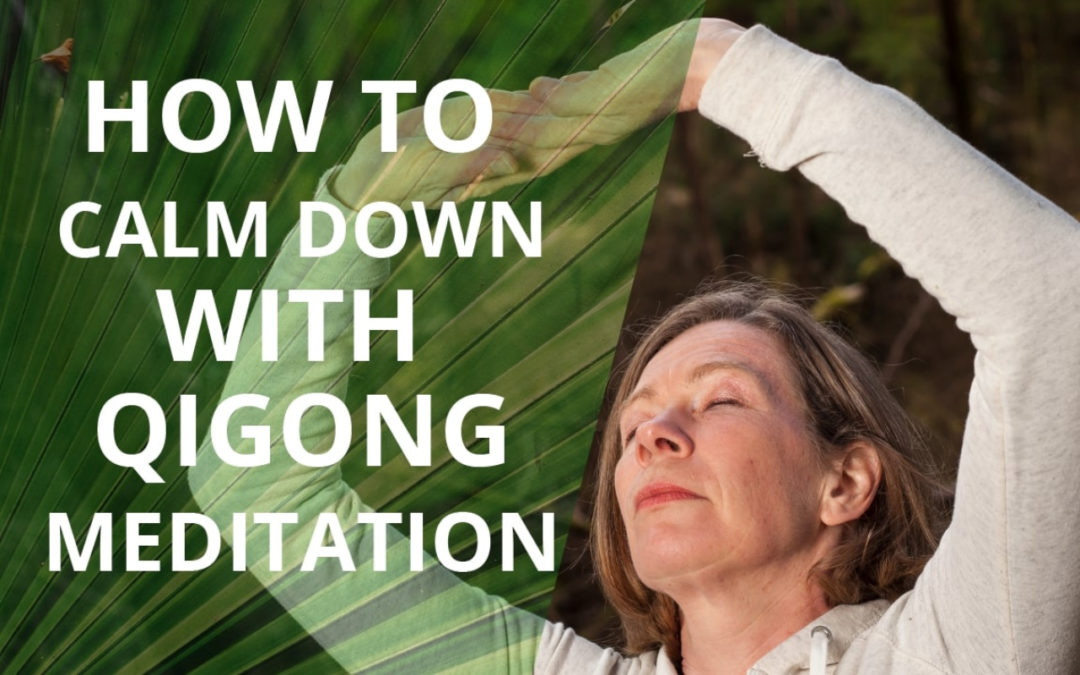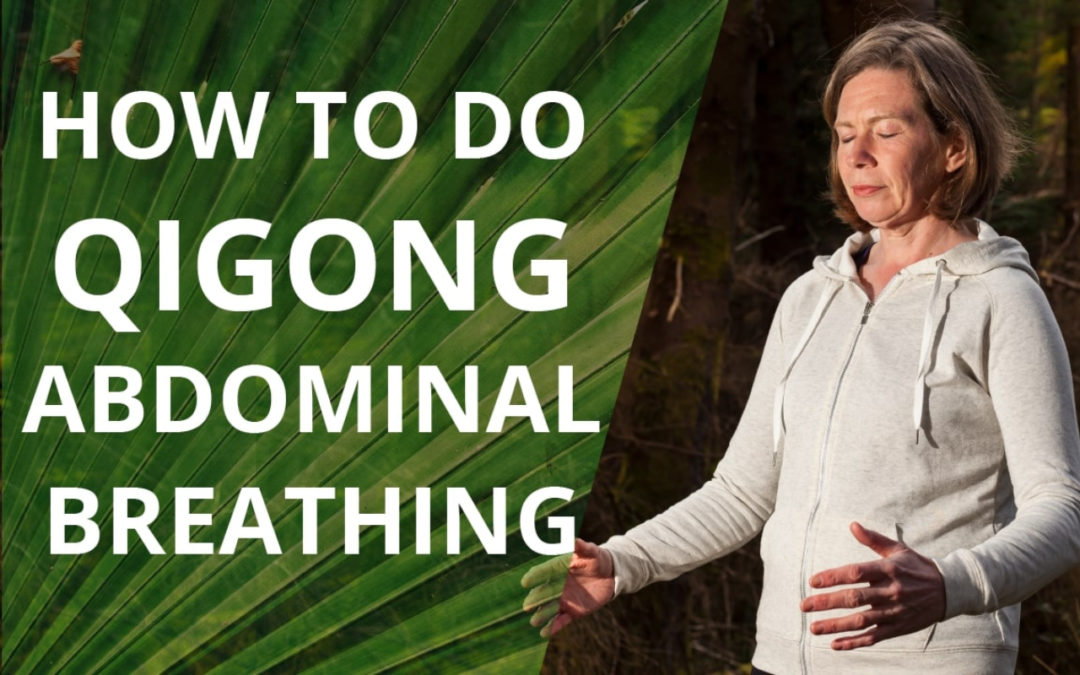
by janicetucker | 19 Apr 2018 | Qigong, Qigong & Emotional Issues, Qigong Meditations & Breathing, Qigong Routines, Qigong To Help Manage Specific Health Conditions
Do you ever wake up feeling as though you’ve been run over by a bus? I do, but thankfully not very often. We all know the feeling of having suffered a terrible night’s sleep. We feel exhausted both physically and mentally. We may also feel anxious that we won’t be able to function to the best of our ability at work. We may also be fearful of this happening night after night, and wonder how we are going to manage our lives if the exhaustion gets worse. In the video today you’ll learn how to use Qigong for sleep problems.
Janice Tucker is a practitioner of Traditional Chinese Medicine and Medical Qigong. She is also the founder of the Space To Relax online programme of Qigong video lessons.
Please don’t forget to subscribe to my YouTube channel by clicking the red “Subscribe” button on the page. That way you won’t miss my regular videos which are full of useful health enhancing tips. These videos will help you to enhance your health and prevent illness from arising in the first place. Also please give this video a “Like” if you found it informative.
Types of Sleep Problems
There are a number of different sleep problems which can all affect the quality and quantity of the sleep we get. The result is that they can also have a negative effect on our energy levels and our mental health. The following sleep problems are listed on the Mental Health Ireland Factsheet on Sleep where you can find more information.
- Insomnia. This affects an estimated 20% of people and is the most common sleep disorder. This is the one we will be focusing on in this video.
- Narcolepsy. This is excessive sleepiness.
- Sleep Apnoea. The person may stop breathing at intervals in the night which then wakes them so their sleep is constantly being interrupted.
- Sleep Disorders in Children. This can be distressing and exhausting for both children and parents. Sleep problems can impact on the physical and emotional health of a child so are important to address as early as possible.
The Solution – Qigong For Sleep Problems
In order to be able to sleep soundly we need to have a calm mind. Often we find that our minds are too busy when we go to bed. This over-excitement in the brain can prevent us from getting off to sleep quickly and easily.
There are many practical steps you can take to ensure that your mind is calm before bed, e.g. taking regular exercise, establishing a regular time for going to bed, turning off screens at least an hour before bed, taking a bath, avoiding coffee and alcohol a few hours before going to bed.
Qigong is also the perfect practice to help you improve the quality of your sleep because every Qigong method helps to calm your mind, the essential ingredient for good sleep.
Below are a few specific tips using Qigong for sleep problems.
- Practice Abdominal Breathing as you are lying in bed at night. Refer to my previous video called “How to Do Qigong Abdominal Breathing or Diaphragmatic Breathing“.
- Watch my previous video called “How to Calm Down with Qigong” so that your mind is in a calm state before going to bed.
- Relaxation is very important as it gets you into the state where you can easily go to sleep. Watch the video “Qigong Relaxation Techniques” for some effective Qigong tips on how to do this.
- Watch another video from me called “Qigong for Sleep Difficulties” which will give you more information and useful methods of Qigong for sleep problems.
What Do I Do Next?
If you would like to start using Qigong for sleep problems then:
- Head over to my Space To Relax homepage. There you can sign up for a free 3 part video series of Qigong lessons. These three lessons will you to help to improve the quality and quantity of your sleep. Once you’ve completed the free series you’ll have the opportunity to join my Space To Relax online membership programme of Qigong video lessons. This will allow you to take your practice to a whole new level where you will learn many exercises to eliminate health issues before they become a major problem. I’ll guide you step by step through many more effective Qigong methods which work to calm and clear your mind; essential factors in enabling you to sleep soundly.
- Subscribe to my YouTube channel by clicking the red “Subscribe” button. That way you won’t miss my regular videos which are full of useful health enhancing tips. Also please give this video a “Like” and share with me in the comments box any tips you might have to improve the quality of your sleep.
- Join my free Facebook group, “Space To Relax Free Qigong Group” and leave any comments or questions for me there. I’ll be happy to answer them. Also, by joining this group, you will receive regular posts of Qigong articles and videos with really useful tips about how to use Qigong to improve your state of health.
home

by janicetucker | 1 Apr 2016 | Qigong, Qigong & Emotional Issues, Qigong Meditations & Breathing, Qigong Practice Guidelines & General Information, Qigong Routines
Have you ever wondered why everything is going on in your head and you can’t seem to calm down to feel a bit more grounded? Today I’m going to explain exactly how to calm down with Qigong and bring down the “Excited Point” in your brain!
My name is Janice Tucker and I’m a practitioner of Traditional Chinese Medicine and Medical Qigong and the founder of the Space To Relax online Qigong programme of Qigong lessons where you can learn how to supercharge your health.
The problem is that when we have everything going on up in our heads we feel very easily overwhelmed and we often feel anxious. There are too many things going on and it’s very difficult to think clearly with focus and clarity.
In Qigong we can bring all of these feelings and thoughts down from what we call the “Excited Point” in the brain. We bring them down to what is called the “Dan Tian” area which is in the lower abdomen. Dan Tian is the seat and reserve of your energy. When you can bring your Qi down into Dan Tian you will feel much calmer, less anxious and less overwhelmed.
The following simple exercise will show you how to calm down with Qigong. Close your eyes and place one hand flat on your lower abdomen, below your belly button. As you breathe in feel your abdomen expand so it pushes your hand outwards. As you breathe out feel the abdomen shrink and become smaller. (This exercise is in a previous blog here).
As you are breathing observe where your excitement and all your thoughts are. Where is all the energy in your body? Does it feel like it’s in Dan Tian and the lower abdomen or does it feel like you are “up in your head” with lots of thoughts whirring around?
As you breathe out think of breathing out from your head down to Dan Tian and into your feet. As you breathe in, inhale good Qi and energy from the outside environment and then again, breathe out, bringing busy thoughts down from the Excited Point in the brain to Dan Tian in the lower abdomen and into the feet. Repeat this for as many breaths as it takes you to begin to feel more calm and grounded.
You will notice that very quickly, in just a few breaths, that you can calm your mind so that you have a little bit of breathing space to then easily go about the rest of your day. If you can do this very quick exercise on a regular basis, whenever you remember, this can be a very helpful way to quickly get you back on track to help you be clear and calm again.
Now you know how to calm down with Qigong and also very quickly refocus and relax.
If you want to experience more relaxing effects of Qigong exercises then head to my Space To Relax homepage where you can download a free “Calm Your Busy Mind in 8 Minutes” audio meditation. Also, you can sign up for a free “Space To Relax Qigong Video Series” (you can get this by popping your details in the green box at the top right of this page), practice Qigong for 5 minutes and find out how quickly you can transform yourself from feeling stressed to chilled out!
Click here to subscribe to my YouTube channel if you want to be sure not to miss out on any future videos.
I’d love to hear what you thought of this simple exercise so please leave me a comment below. 🙂

by janicetucker | 11 Mar 2016 | Qigong, Qigong Meditations & Breathing, Qigong Routines
I’d like to introduce you to a simple Qigong Abdominal Breathing exercise for beginners. It’s very helpful for giving you a bit more energy, calming your mind, relaxing your body, improving your sleep and improving your overall general wellbeing.
When you were born you breathed into your belly. As you breathed in, your belly would expand and then shrink as you breathed out. If you watch a baby or one of your pets at home when they are asleep you will see that as they breathe in the belly expands and as they breathe out the belly shrinks. The breath is very relaxed.
As we become older, usually by the age of about 7 or 8, our breathing becomes much more shallow – chest orientated rather than belly orientated, probably due to day to day stresses and strains, rushing around, even for children!
Qigong Abdominal Breathing is the perfect Qigong exercise for beginners because it is really only teaching you what you already know – you already did this as a baby!
Breathe in and out through the nose. As you breathe in expand the belly. If you place your hands flat on your lower abdomen, as you breathe in then you should feel your hands being pushed outwards as the belly expands. In order to make that happen you need to be relaxed in the abdominal area. The best way to feel this is actually if you are lying down. It is much easier from this position. You can place your hand on the lower abdomen, or something heavier like a book on this area. You will then see your hand or the book rise up as you inhale and sink down as you exhale.
This is a wonderful exercise to get things started if you are interested in learning Qigong. If you love Qigong Abdominal Breathing and want to take things further then please head over to my website homepage which is www.spacetorelax.com. On that page you will see there are a couple of Qigong freebies that you can download. If you have any comments then please leave them below the video. I’d love to hear how you got on with the Qigong Abdominal Breathing exercise.




